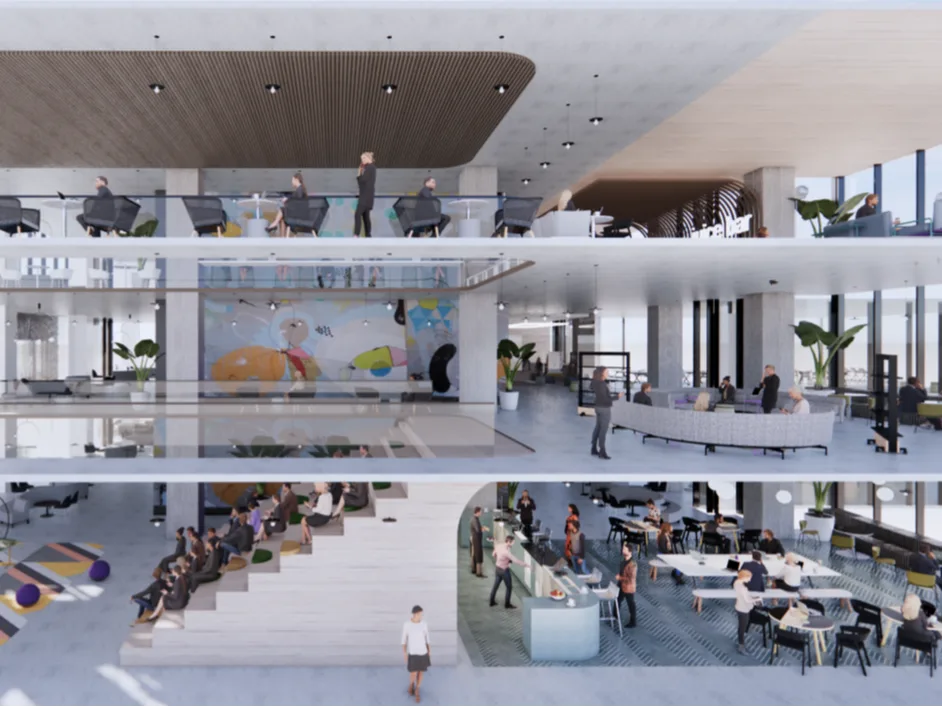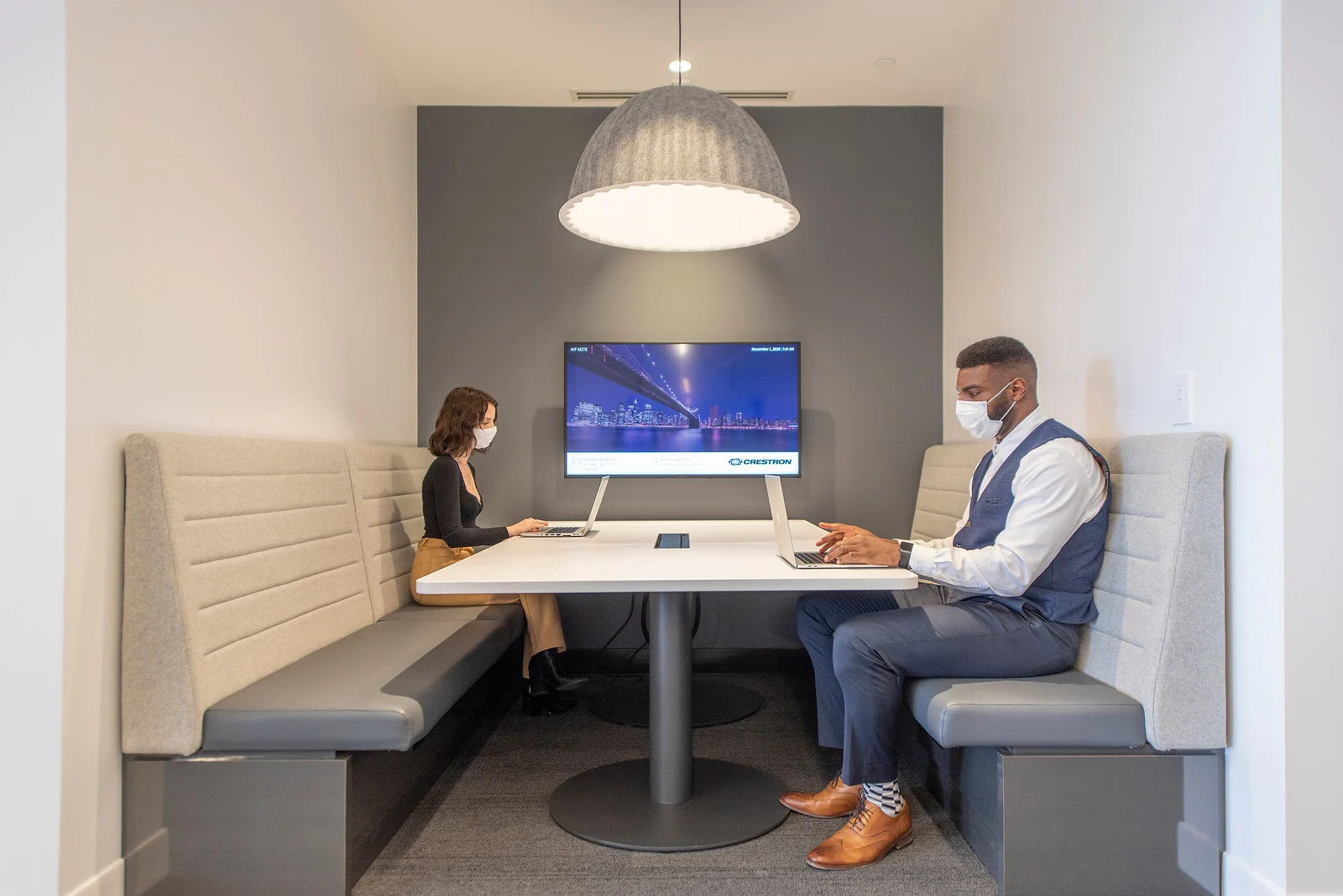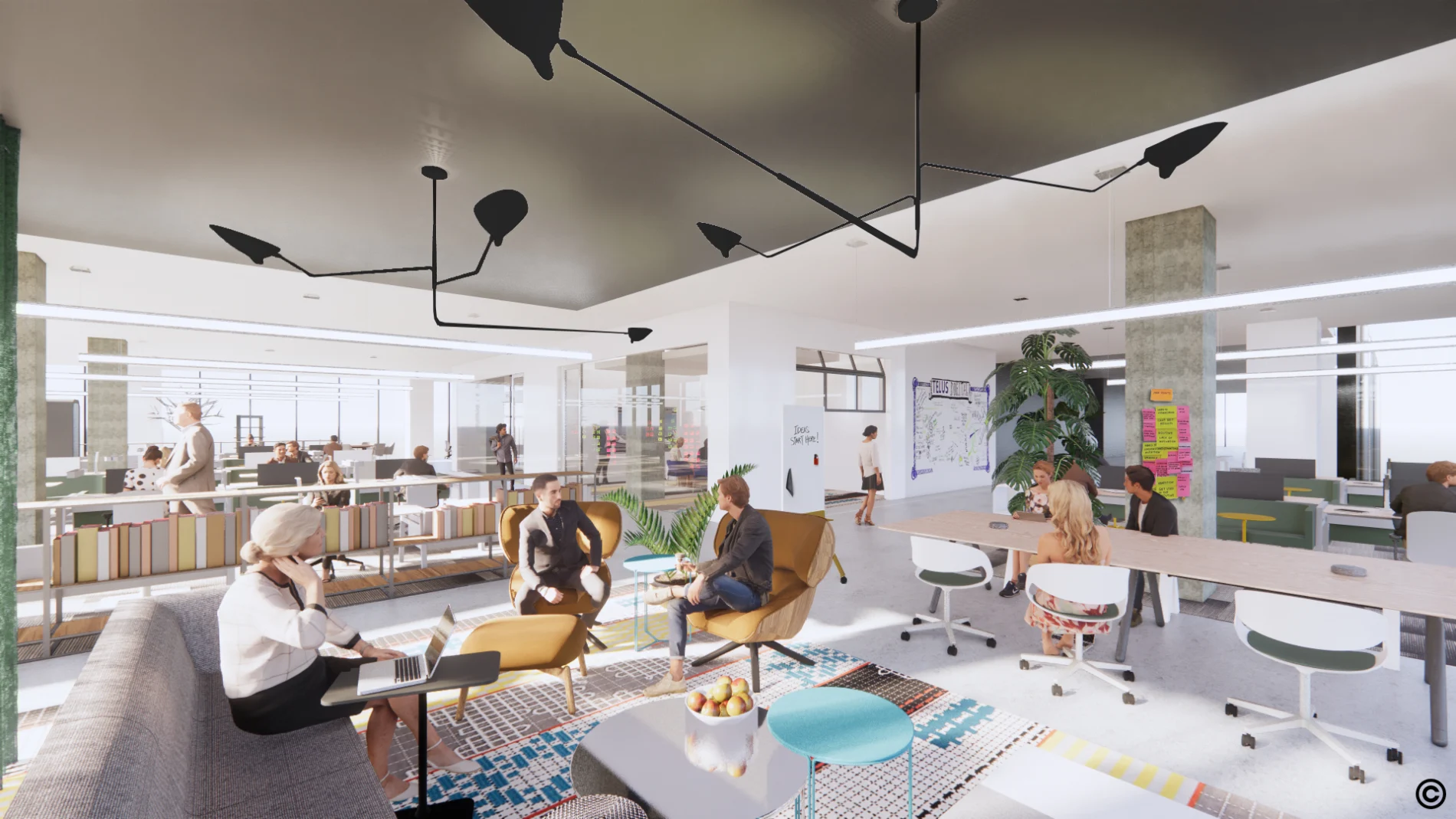
Planning for a hybrid workforce
May 17, 2021
The notion of a hybrid workforce is making headway as organizations anticipate lasting change in employee behaviour due to the pandemic. Within a hybrid workforce, employees will no longer come into the office five days a week, but will have the flexibility to work from home, from a satellite office, or from an alternate space over the course of their work week. At TELUS, we embraced hybrid work over a decade ago, and our real estate space planning and design, as well as company culture, has evolved to encourage this work style. Pulling from our experience, we offer insight for organizations that are just getting started with this new working model.
Deep-dive your occupancy use
With real estate costs being one of the top expenditures for most organizations, potential cost-savings is top of mind when delving into the notion of a hybrid work culture. With a hybrid workforce, there is no longer a need to plan for one desk per employee. Instead, organizations can begin to apply different desk ratios for their workforce, depending on the number of employees they expect to have in the office on any given day. This shift in space planning is a crucial first step in understanding what your future real estate portfolio could look like, and therefore, what your saving opportunities might be. There are a number of considerations for a robust analysis:
- What data are you leveraging for your space planning analysis?
- What cross-functional analytics can you pull into your decision making?
- What are the upstream impacts of changing desk ratios?
- Who are the stakeholders impacted by this change?
Plan for a diversity of spaces
With employees now having a choice in where they want to work, the office is going to serve a different purpose than it did before. With this comes the opportunity to change the way your employees move throughout your space. Curating a diverse office environment enables your employees to choose to work in a way that truly meets their needs, rather than working from a sedentary workstation by default. Space diversity can include a mix of workstations, meeting and collaboration rooms, quiet/meditation rooms, outdoor workspaces, cafe’s, libraries and more. In order to cultivate the right space, leaders need to understand how their teams function when in the office, and what type of spaces will be conducive to the new company culture.
As you make this shift, culture is a key aspect that cannot be overlooked. The office has long been considered the central node for social interactions, where culture emerges in its physical form. Taking this into account, leaders must understand the day-to-day flow of the organization as well as anticipate the shift in social interactions in order to design the right amount, and type, of space. In order to gain a better understanding of how you can plan your future workspace, ask yourself:
- Do your employees need to come into the office daily?
- Do your employees frequently spend time away from their desks?
- Do you have a highly collaborative workforce?
- What spaces do you have today that foster social interactions?
- What type of spaces are critical to retaining company culture?

Invest in your technology and remote work offerings
With employees now able to work from home, organizations will need to set up their workforce with the proper tools and resources to successfully operate outside of the office. With organizations at large embracing a hybrid work culture, the offerings you provide will be considered as a benefit when it comes to attracting top talent. The investments you make and offer your employees will reap returns if chosen thoughtfully. Although there is no shortage of tools or resources to choose from, there are some basics that should not be overlooked:
- Standard equipment bundle including laptop, keyboard and mouse, so that your employees can be productive wherever they are
- Collaboration tools such as instant messaging and shareable folders, to maintain easy communication and file sharing
- A remote work compensation package, tailored to your organization, to ensure that employees feel supported with any additional costs that come from working outside of the office.
Prepare a comprehensive change management strategy
In preparing for a hybrid workforce, developing a strong change management strategy is critical for success. Employees depend on their leadership team to guide them through the ongoing developments of the company, and with such a dramatic shift in work style coupled with an unprecedented external environment, change management is more important now than ever before. While many may be comfortable not having an assigned desk or office, it will be unsettling for some.
A question that must be addressed is whether or not the physical location of your workforce remains a priority - is your organization going to allow employees to relocate to a new city or country as part of this new hybrid arrangement, or will you require all employees remain in close proximity to the office? Leaders will need to deep dive into the layers associated with a successful change and ensure that adequate processes and rules are clearly documented both for employees and for leaders themselves. As managing remote teams may be new to many, guiding principles to support this shift will go a long way.
A change of this significance will require all leaders to act as sponsors, championing this new working model across the organization. This will set a precedent and enable trust within the new culture. The goal is to have your employees feel safe in choosing to work outside the office, and will do so without any concern that their development in the company is at risk.
In thinking about your change management strategy, ensure you consider the following:
- What type of workforce do you have, and how responsive do you anticipate they’ll be to this change?
- What documents, processes, and rules do you need to put in place prior to the rollout?
- What support or training will you provide to leaders who are new to managing remote teams?
- What ongoing support will you provide to your workforce once the initial rollout is complete?
At TELUS, our real estate team has continued to evolve our spaces and policies to keep up with the ongoing needs of our workforce. With over a decade of experience operating in a hybrid work environment, we have seen many iterations of the way we plan, operate, and design our buildings, and encourage others to continuously evolve their workplace strategy to keep up with the ever changing demands. Whether you are transitioning to a hybrid work culture for the first time, or are re-thinking your existing portfolio, we are here to help. For more information on how TELUS can support your organization, please contact
TTO@telus.com


